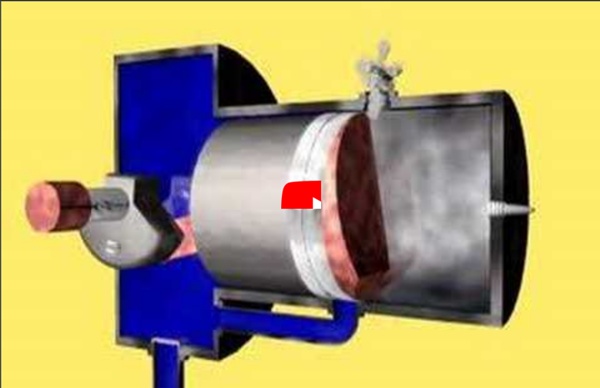



http://www.youtube.com/watch?v=LuCUmQ9FxMU
Related: jonedukdsl- 4 stroke diesel engine.flv Four-stroke engine Four-stroke cycle used in gasoline/petrol engines. 1 - Intake, 2 - Compression, 3 - Power, 4 - Exhaust. The right blue side is the intake and the left brown side is the exhaust. The cylinder wall is a thin sleeve surrounded by cooling liquid. A four-stroke engine (also known as four-cycle) is an internal combustion engine in which the piston completes four separate strokes which comprise a single thermodynamic cycle. Nikolaus Otto was an German inventor of the first interna... Nikolaus Otto was a German whom invented the first internal combustion engine which burnt fuel efficiently in a piston combustion chamber. He lived for 58 years, he was born on 10th of June 1832 in western Germany and died on 26th of January 1891 in Cologne Germany. Intake stroke - The piston descends from TDC (top dead center) to BDC (bottom dead center). As soon as the piston starts to descend, the inlet valve will open and a mixture of fuel and air or just air in diesel engine is forced in to the cylinder by atmospheric pressure. Once the piston reaches BDC (bottom dead center) the inlet valve will immediately close. Compression stroke - With both the inlet and outlet valves closed the piston will return from BDC (bottom dead center) to TDC (top dead center) compressing the air or air and fuel mixture in to combustion chamber.
Car Bibles : The Fuel and Engine Bible: page 1 of 6 The Fuel and Engine Bible - how engines work including 2 stroke, 4 stroke and wankel (rotary) engines, fuel, octane rating, power, bhp, gas types and grades, carburettors, fuel injection, tuning, tweaking, nitrous, turbos, superchargers, chipping, hybrids, how to keep your engine running at peak fitness and much more. The Fuel & Engine Bible Translated versions of this site: Svenska Русский 中國 Wankel Engine I've recently found out about a Wankel Engine, much more sensible engine design then the usual engines we are used to. This is something most people are unaware of. Most of us are used to common 4-stroke cylinder engines found in most today's cars. One such engine consists of a cylinder body, piston that moves up and down, and a connecting rod that connects the piston with the crankshaft, turning linear movement into a rotational. Of course there are much more elements to it then these but these are basics.
Combustion Chambers (and a little engine theory) The combustion chamber is the area inside the engine where the fuel/air mixture is compressed and then ignited. It is generally formed on one side by the shape cast into the cylinder head, and on the other side by the top of the piston. When the piston is at top-dead-center the chamber is at its smallest dimension, and this is the time when the fuel/air mixture is at its most unstable condition and ready to be ignited.